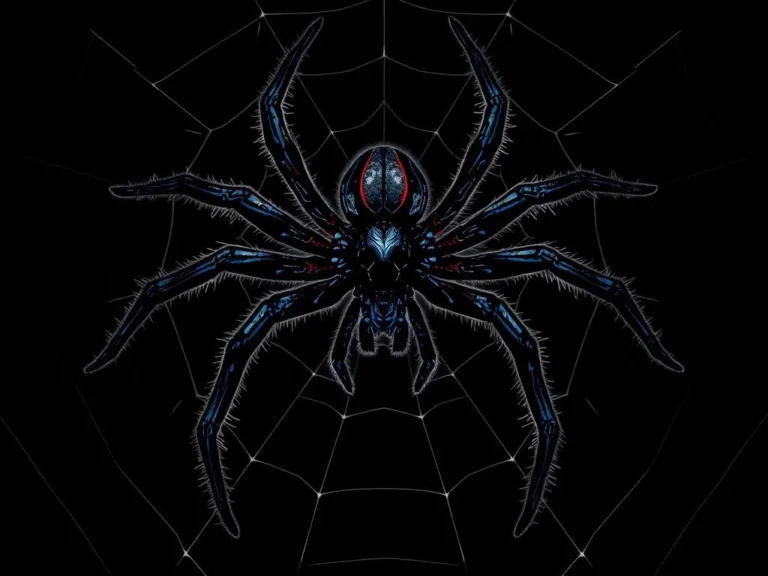Deathwatch Beetle Symbolism: Uncovering the Mysteries of Life and Death

Introduction
The deathwatch beetle, a small but intriguing insect, has long been associated with the symbolism of life, death, and the transition between the two. Its eerie tapping sound, often heard in the silence of the night, has captivated the human imagination for centuries, leading to a rich tapestry of beliefs and interpretations. In this article, we will delve into the deathwatch beetle symbolism, exploring its significance and the insights it might offer into the deeper mysteries of our existence.
The deathwatch beetle is a wood-boring insect that gets its name from the tapping sound it makes, which was once believed to be a harbinger of death. This belief, rooted in superstition and folklore, has endured through the ages, making the deathwatch beetle a powerful symbol in many cultures around the world. By understanding the deathwatch beetle symbolism, we can gain a deeper appreciation for the cycles of life and the profound connections that exist between the natural world and our own spiritual journeys.
The Deathwatch Beetle: A Symbol of Transition
The deathwatch beetle is often associated with the concept of transition, a theme that runs deep in the human experience. Its tapping sound, which can be heard in the quiet of the night, is believed to signify the approaching end of a life or the beginning of a new chapter. This duality of meaning reflects the delicate balance between life and death, a balance that the deathwatch beetle symbolism seeks to explore.
For many, the deathwatch beetle is a reminder of the impermanence of life and the inevitability of death. Its presence might suggest that it’s time to reflect on our own mortality and to consider the legacy we will leave behind. However, the deathwatch beetle symbolism can also be interpreted as a symbol of transformation, a reminder that even in the face of death, there is the potential for renewal and rebirth.
Exploring the Spiritual Significance of the Deathwatch Beetle
The deathwatch beetle has long been associated with the spiritual realm, with many cultures and belief systems incorporating its symbolism into their traditions and practices. In some traditions, the deathwatch beetle is seen as a messenger from the spirit world, carrying important messages or warnings to those who are attuned to its presence.
For some, the deathwatch beetle might represent the connection between the physical and the metaphysical, a bridge between the tangible world and the realm of the unseen. Its tapping sound could be interpreted as a call to pay attention to the subtle energies and vibrations that surround us, inviting us to open ourselves to the mysteries of the universe.
The Deathwatch Beetle and the Cycle of Life
The deathwatch beetle symbolism is also closely tied to the cycle of life and death. As a wood-boring insect, the deathwatch beetle is often associated with the process of decay and decomposition, a natural part of the cycle of life. Its presence might suggest that it’s time to let go of the old and embrace the new, to surrender to the inevitable changes that are a part of the human experience.
In some traditions, the deathwatch beetle is seen as a symbol of transformation, a reminder that death is not the end but rather a necessary step in the journey of life. Its tapping sound might be interpreted as a call to embrace the changes and challenges that come our way, to find the strength and resilience to navigate the ebbs and flows of our existence.
The Deathwatch Beetle and Intuition
The deathwatch beetle symbolism is also closely linked to the concept of intuition and inner wisdom. Its presence might be seen as a sign that it’s time to trust our instincts and pay attention to the subtle messages that come to us from the natural world.
For some, the deathwatch beetle might represent a connection to the subconscious mind, a gateway to the deeper layers of our psyche. Its tapping sound could be interpreted as a call to explore the mysteries of the self, to delve into the hidden corners of our consciousness and uncover the wisdom that lies within.
The Deathwatch Beetle and Transformation
The deathwatch beetle symbolism is often associated with the process of transformation, a theme that is central to the human experience. Its presence might suggest that it’s time to let go of the old and embrace the new, to shed the layers of our past and emerge as a more authentic version of ourselves.
In some traditions, the deathwatch beetle is seen as a symbol of rebirth and regeneration, a reminder that even in the face of darkness and despair, there is always the potential for growth and renewal. Its tapping sound might be interpreted as a call to embrace the changes that come our way, to trust in the process of transformation and to surrender to the ebb and flow of life.
Conclusion: Embracing the Mysteries of the Deathwatch Beetle
The deathwatch beetle symbolism is a rich and multifaceted topic, one that invites us to explore the deeper mysteries of life, death, and the human experience. Whether we interpret its tapping sound as a harbinger of doom or a call to embrace the changes that come our way, the deathwatch beetle remains a powerful and enduring symbol in the collective consciousness of humanity.
By exploring the deathwatch beetle symbolism, we can gain a deeper understanding of the cycles of life and death, the connection between the physical and the metaphysical, and the importance of trusting our intuition and inner wisdom. As we navigate the ebbs and flows of our existence, may the deathwatch beetle serve as a reminder that even in the darkest of times, there is always the potential for transformation and renewal.





